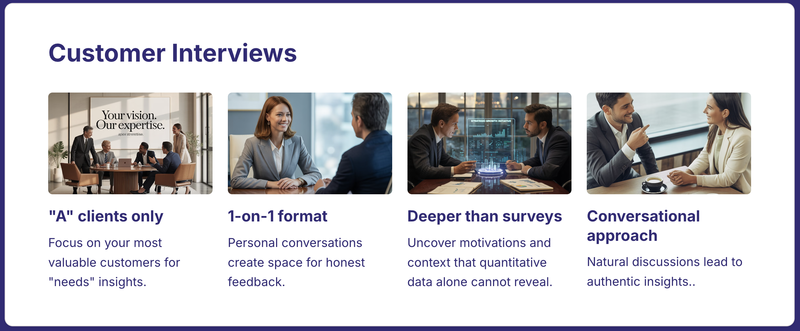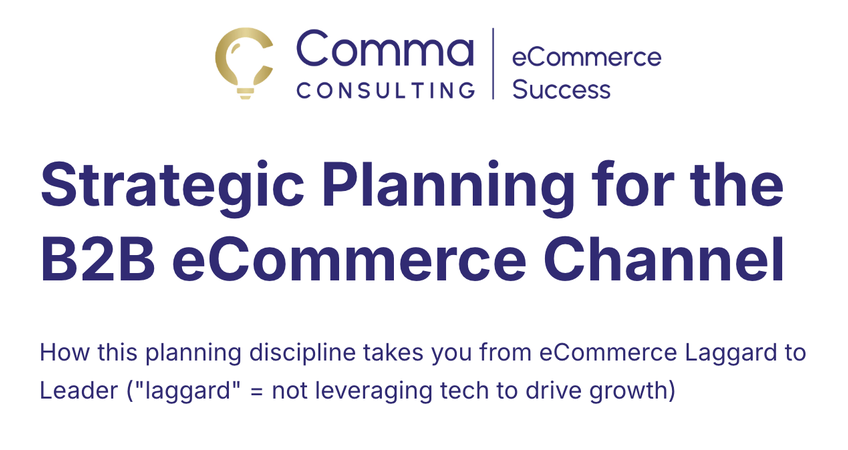
I had the privilege of presenting at the Online Retail Conference & Expo in July 2025. I was asked to talk about the e-commerce strategic planning needs of B2B Organisations and what this planning journey looks like in order to evolve this business type into Digital/e-commerce powerhouses.
The presentation was well received and has been translated into an article format below! This is important because the 30-minute presentation contained a high volume of information, which is insufficient time to discuss such an important topic.
Presenting this topic in article format allows everyone to digest it at their own pace. Enjoy!!!!

Strategic Planning for the B2B eCommerce Channel - the roadmap from eCommerce laggard to leader
This article is a comprehensive guide explaining how the B2B eCommerce channel can be strategic and become that "growth catalyst" for the entire organisation.
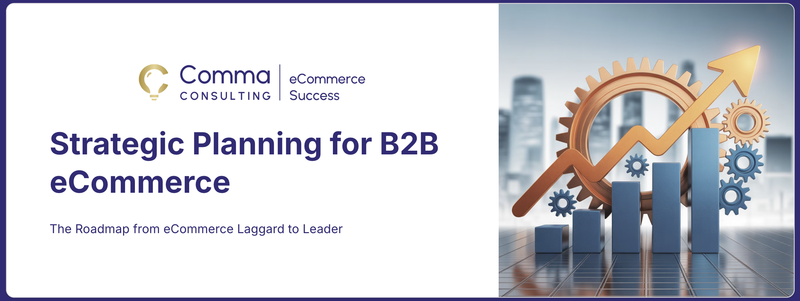
Introduction - Setting the Scene:
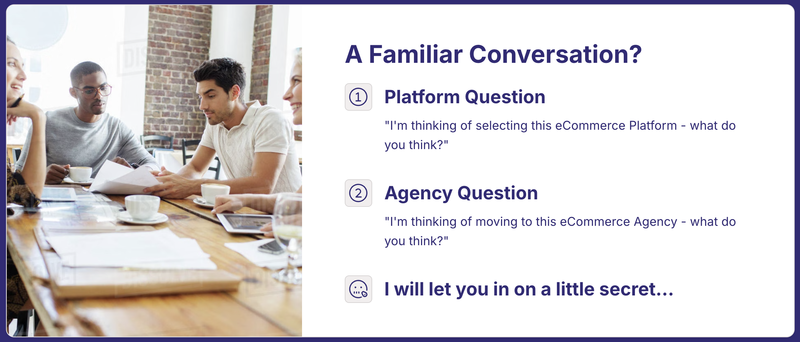
Have you ever taken part of one or both of the conversations mentioned below?
One person says...
I am thinking of selecting "this" eCommerce Platform for our business. What do you think?
Another person responds...
Are you crazy? Don’t go near that eCommerce technology, I used it (or a colleague used it) and it caused nothing but problems for our business!!
OR
One person says...
I am thinking about selecting this eCommerce/Digital Agency to build our eCommerce channel. What do you think?
Another person responds...
Are you crazy? Please don’t go near that Agency, I have heard they are nothing but trouble.
I am going to let you all in on a little secret…
That eCommerce technology is driving significant growth for B2B businesses all over the world.
AND that Agency is also playing a key role in the growth.
So what’s the problem?
Why are you hearing these negative stories, yet businesses are benefiting?
There are no specific individuals at fault.
The issue is the absence of strategic focus for the B2B eCommerce channel. The research confirms this to be the case.
Research - strategic planning for eCommerce:
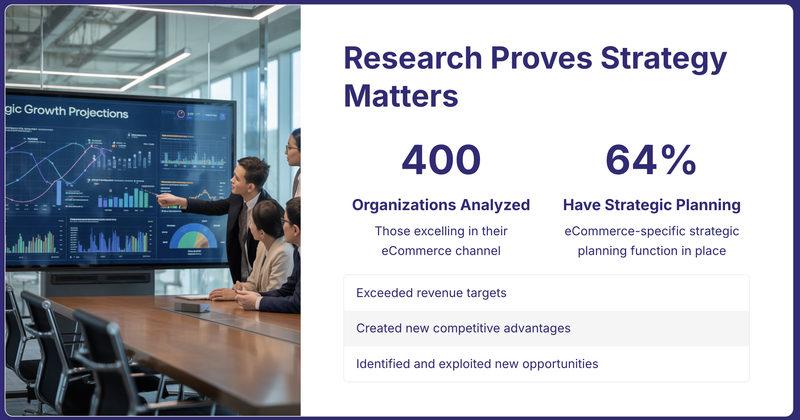
Research was conducted on 400 B2C and B2B businesses that all have high-performing eCommerce channels.
The research identified 64% (of the 400) had a specific and dedicated eCommerce strategic planning function. And as a result of this discipline, it produced three common outputs for this cohort:
- Met or exceeded revenue targets
- Produced competitive advantage
- Identified and exploited new opportunities
Defining "Strategy":
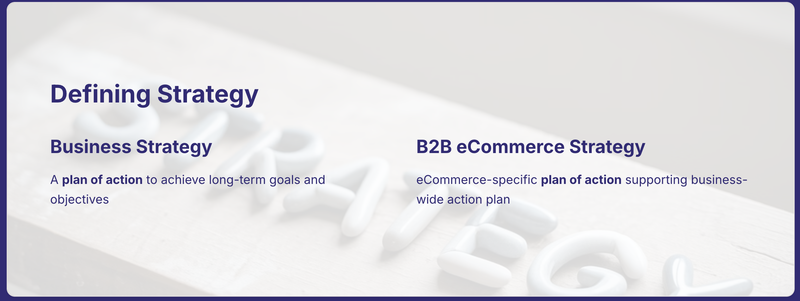
The term "strategy" gets thrown around continuously, so to ensure we are all on the same page, a definition is required...
Business strategy is a plan of action designed to achieve a business’s long-term goals and objectives. Within this plan, a core set of activities must operate to a very high standard to meet these goals.
With this definition now set, we can define B2B eCommerce strategic planning...
Defining B2B eCommerce Strategy:
Supporting this wider plan of action is a separate but connected eCommerce-specific plan that defines what the eCommerce channel must look and behave like to support the business-wide plan.
When these two plans are in alignment, the eCommerce channel drives and amplifies business-wide growth.
How do you know if you need more strategic clarity for the B2B eCommerce channel?
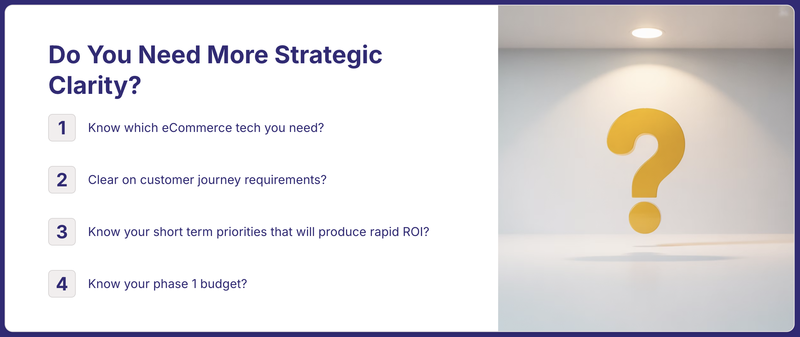
Many believe they possess the strategic clarity necessary to plan a B2B eCommerce channel. But are you really?
To truly know if you are strategically prepared, answer the questions below.
Do you have a high degree of confidence in the following…
- Do you know which eCommerce technologies you need?
- Are you 100% clear on what digital/eCommerce journeys need to look like for your customers?
- Do you know what the “low-hanging fruit” short-term priorities look like?
- How much investment is needed? How confident are you in your budget for this channel?
If you have not categorically said “YES” to all of the above, you are not strategically prepared.
The Strategic Planning Journey
Now that the scene has been set, let's embark on the strategic planning journey for your B2B eCommerce channel!
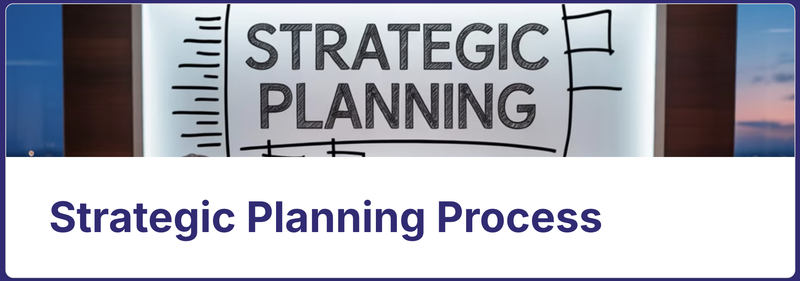
The first part of the strategic planning process involves conducting a fact-finding mission for the two primary stakeholders who stand to benefit...
- The B2B Business
- The B2B Customer
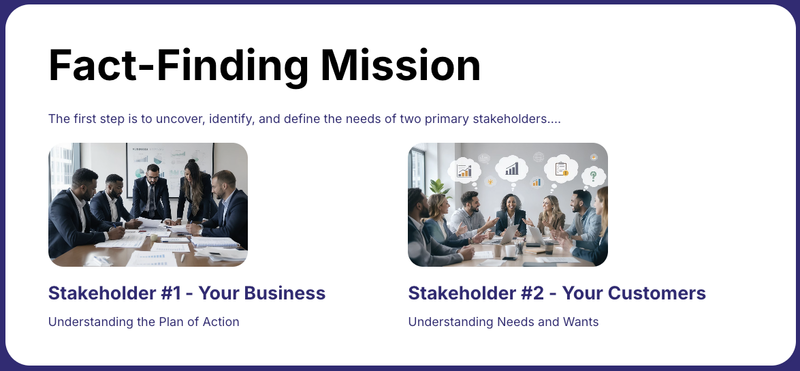
Stakeholder #1: Understanding the Business “The Plan of Action”:
The first step is to understand the business-wide plan of action.
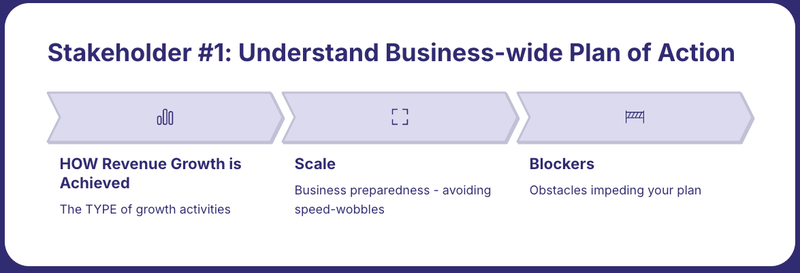
We need to unpack the plan of action into three subsets or subtopics…
- What type of growth is the business seeking? We need to know how a business will reach its future state.
- What does scale look like?
- What are the growth blockers?
#1. The right type of growth:
Understanding growth is not about understanding what revenue increases the business wishes to achieve. It's less about revenue targets and more about how business leaders think they will achieve those revenue targets. Again, knowing the activities that form the plan of action.
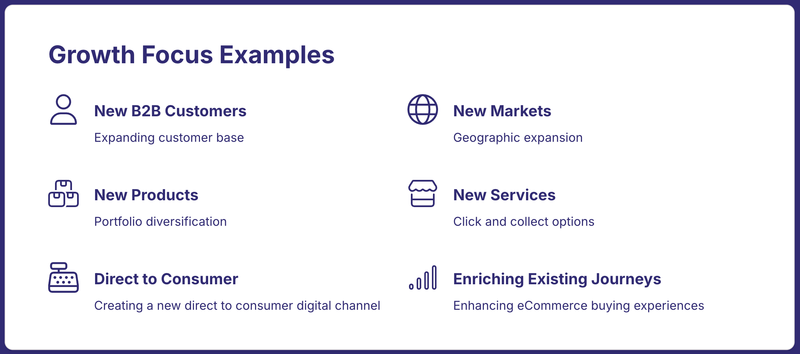
Some examples of what these actions can look like for B2B organisations...
- Acquiring new customers
- Reaching new markets with existing products (new reach methods – Marketplaces)
- Introduce new products to existing markets
- Introduce new markets with new products
- Creating direct-to-consumer channels
- Introduce new services (click and collect)
- Enrich and/or simplify existing buying experiences for existing customers
Why is it important to understand HOW a business is going to get to its future state?
The primary purpose of strategic planning for the eCommerce channel is to take these core business activities (a plan of action) and translate them into digital versions of themselves.
For example, if a B2B business has a strategy of better leveraging its physical warehouses nationwide to reduce "dead stock" issues and promote faster delivery of products, what can the eCommerce channel do to capitalise on this business strength? One way is to introduce digital "click and collect" services and have orders despatched from each branch based on the customer's location.
This is why it's crucial to have tight cohesion between the Business and eCommerce action plans.
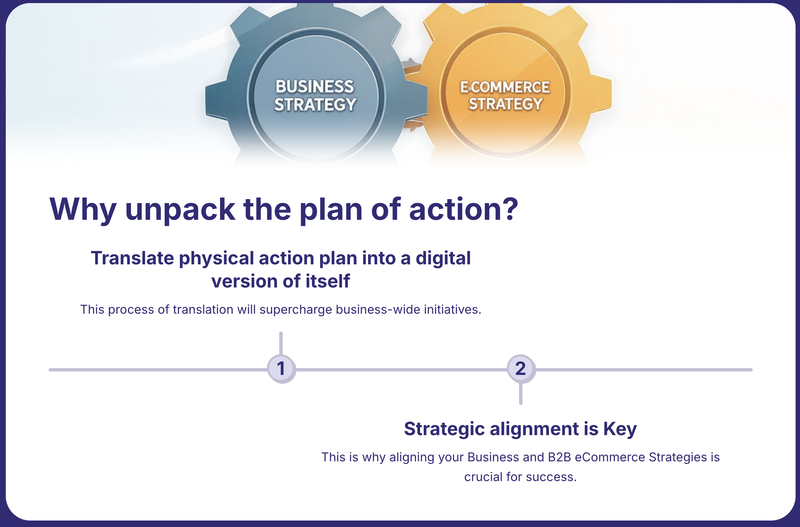
#2. Scale – “Business preparedness”:
Another way to discuss scale is to understand the level of preparedness a business has for growth. More specifically, how ready is a business to withstand order volume increases that come from the eCommerce channel.
This discussion focuses on the areas of the business that may be affected by "speed wobbles".
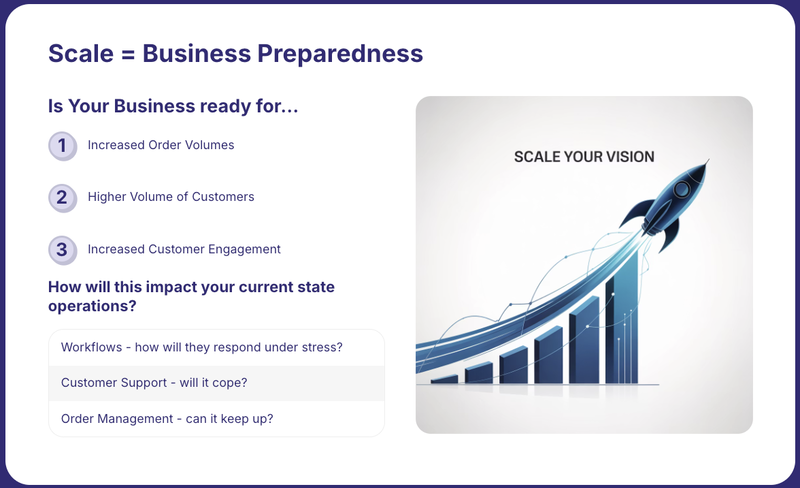
Speed Wobbles:
Think of an old car that is not designed to go fast, but all of a sudden, you have no choice but to race this older car. Once you reach certain speeds, everything begins to shake. This is speed wobbles, and businesses suffer from this when specific business departments are not prepared to withstand higher volumes of business and/or customer engagement.
The "wobbles" represent operational chaos, which translates to a decrease in profitability.
Two examples:
#1. Customer communications. Given the high rate of repurchasing in B2B, what does the new communication standard need to look like to activate repurchasing behaviours and support the future state plan of action?
#2. Order management. What happens if the order volumes were to double or triple? What do the existing operational workflows look like in this context?
There is a direct correlation between a lack of scaled preparedness and profitability.
#3. Growth Blockers:

This conversation is focused on addressing the current known blockers to achieving the plan of action. The key question that needs to be answered is...
“At this moment, what is preventing you from reaching your future state?”
This type of questioning is crucial for identifying internal weaknesses, which are internal business factors that put your business at a disadvantage and prevent (or slow down) you from bringing the action plan to life.
These are specific business characteristics preventing you from reaching your future state.
This conversation is crucial at this stage of planning because....
STRATEGIC PLANNING OF THE B2B ECOMMERCE CHANNEL CAN ELIMINATE BUSINESS WEAKNESSES
When you undertake a planned process to eliminate weaknesses you create, what I call a "Strategic Ripple Effect"....
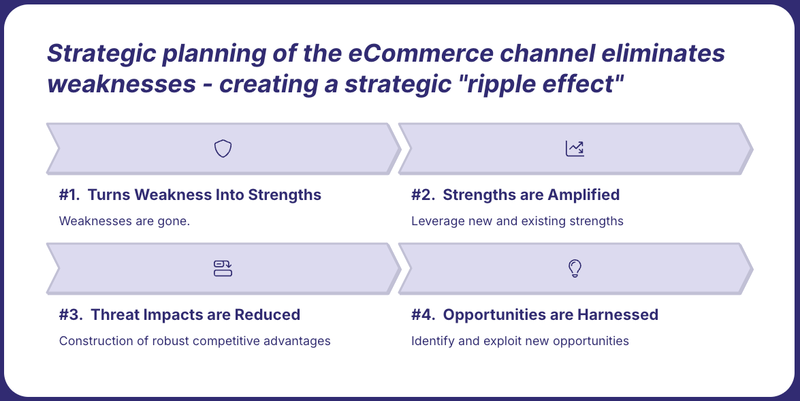
The right treatment and execution of eCommerce technologies, combined with the introduction of new workflows and supporting systems, creates the following ripple effect...
- Eliminates internal business weaknesses, turning weaknesses into strengths
- These business strengths become amplified on the eCommerce channel
- This strength amplification reduces the impacts of threats that produce competitive advantage
- The reduction of threats produces new opportunities that the business has never seen previously
All are crucial to realising the business future state.
Consider the example above where a B2B organisation wishes to reduce dead stock by better leveraging its physical locations around the country...
- The eCommerce channel promotes inventory availability in each location and offers faster pick-up and delivery services, turning a weakness into a strength. And this presentation of inventory amplifies this strength.
- The B2B organisation offers pick-up services that surpass those of its competitors, building competitive advantage.
- The B2B organisation sees an increase in loyalty through a stronger connection with customers who are near these physical locations. They also observe an increased rate of sales when customers visit these locations, which is an opportunity they did not realise previously.
Digital Transformation:
When an eCommerce strategic planning process diagnoses the business growth plan, identifies scaling needs, and addresses weaknesses, you have officially activated the first steps of your Digital Transformation.
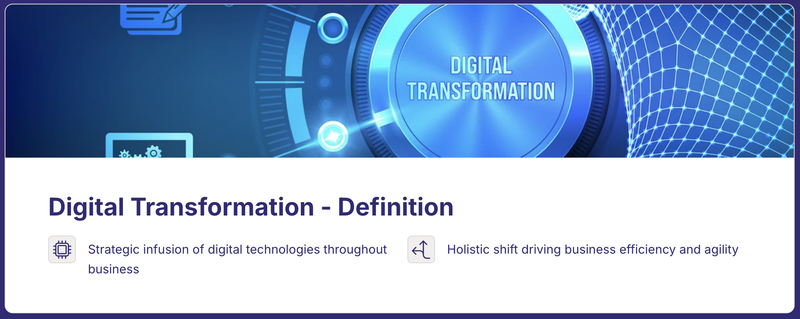
“Digital Transformation” definition:
Digitally transforming a business is the strategic infusion of Digital/eCommerce technologies throughout a business and becomes a holistic shift in driving business efficiency and agility.
Research shows the ideal starting point for the digital transformation process is with the eCommerce channel.
There are four key reasons why the eCommerce platform should be the first phase of your digital transformation…
- eCommerce channel is a customer-centric touchpoint. It forces the business to always think about the customer when digitally transforming.
- The eCommerce channel is hungry for data from other business systems. So the standard of data needed from different systems are defined here, and becomes a future requirement of other business systems.
- The eCommerce channel generates new types of data that the business has not previously seen or utilised correctly: for example, sales history. This is another form of requirement for other business systems. They will need to hold new types of data to support the future state.
- Because the eCommerce channel produces commercial outputs (revenue), it becomes a tangible symbol that the digital transformation is a good thing. This helps evolve culture.
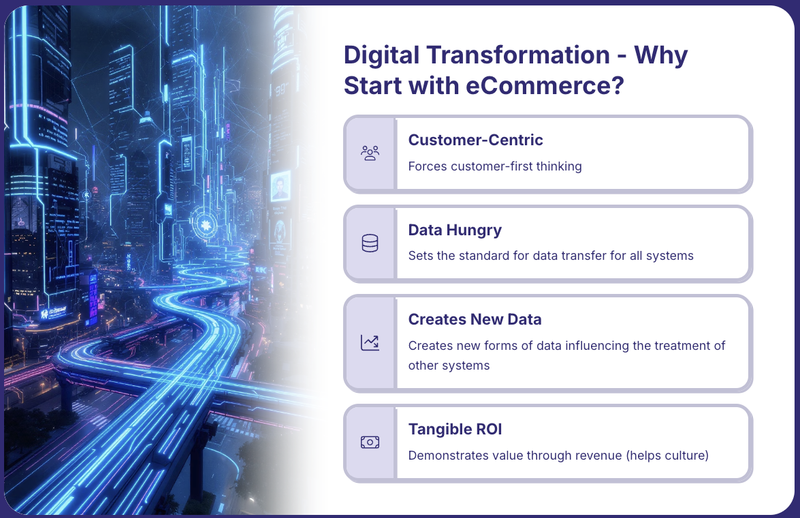
Step 2: Understanding Customer Needs:
When you follow the Customer Voice, they win, which means YOU WIN. This is why unpacking the needs of the B2B customer is crucial in this process.
B2B organisations that focus on customers…
- Customer experience scores are 38% higher than competitors '
- Product and service innovation moves more rapidly than competitors
- Your business is 1.6 times more likely to achieve year-over-year revenue growth
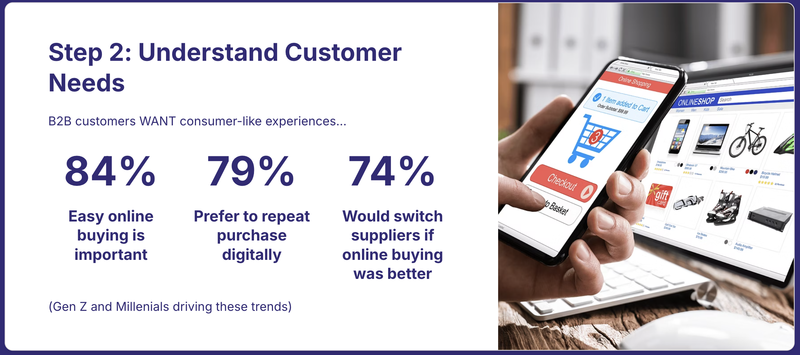
Why is customer data critical in this planning process?
B2B customers want digital/eCommerce consumer-like experiences!
- 84% of B2B buyers say an easy and accurate online web store experience is important
- 79% prefer to place repeat orders online
- 74% of B2B buyers would switch suppliers if another offered a better online experience
What is driving these trends in Australia?
Retail eCommerce continues to expand, with approximately 17 million Australians shopping online monthly in 2024. An increase of 45% since 2020 (COVID started in December 2019 – approx. 12 million online shoppers in 2020).
Research suggests that by 2029, online retail shoppers could reach 23 million, nearly doubling the volume of retail sales from 2020.
Gen Z and Millennials are driving the expansion of the online retail market. And also, these two consumer groups are playing a key role in the growth of B2B eCommerce.
They are now taking on B2B buying and procurement positions.
What information do we need from B2B Customers?
When it comes to extracting the customer voice, one of the most important first steps is to know the questions that need answering...
- What products and services do they love from you?
- What products and services do they want that you don’t offer?
- What are their buying/experience pain points when they try to purchase from you?
- What do customers love about engaging with employees? What does that engagement look like?
- What are the most common questions/complaints customers have when trying to buy from you?
- Why are customers leaving you?
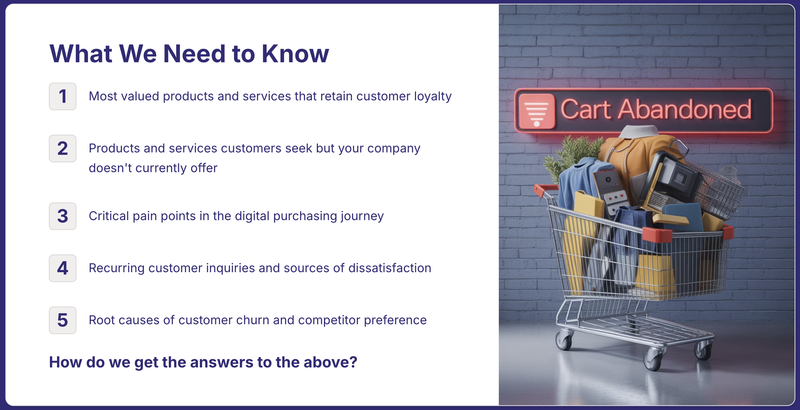
How do we do we get the answers to these questions? We listen!!! We stop talking and become the NEW "CEO": the Chief Empathy Officer.

There are three forms of listening disciplines…
- Customer interviews
- Quantitative data
- Qualitative data
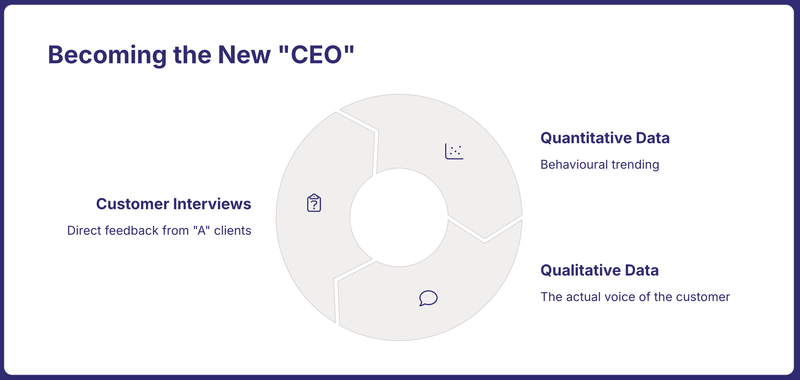
#1. B2B customer Interviews:
Interviews are for “A” clients and are ideally one-on-one.
While surveys can be valuable, one-on-one interviews provide a deeper layer of insight. A customer may provide a response that requires digging. You do not get that in a survey.
Also! People hate forms. A survey is a fancy form.
Make the interview an enjoyable experience over coffee or lunch and make it more of a conversation. That is how you extract the right type of data in this format.
#2. Quantitative Data:
Quantitative data is factual, numeric information defining what people do, measured in numbers. In essence, people vote with their actions. This form of data defines trending consumer behaviours.
This data tells us:
- How customers behave when they are trying to engage and buy from you.
- What is working and what is NOT working on your current B2B site.

Sources for this data type:
- Google Analytcis
- Heat mapping
- AB (and multi-variate) testing
- Etc…
#3. Qualitative Data:
No one has ever said this…..EVER…
I need to buy something for my business so I’m going to go online, and I hope the site doesn’t have enough information, which forces me to contact an employee to answer my important questions before I can make a purchase
So…when people reach out, they are giving you gold!
This source of data not only gives you the pain, but also provides you with how to resolve it.
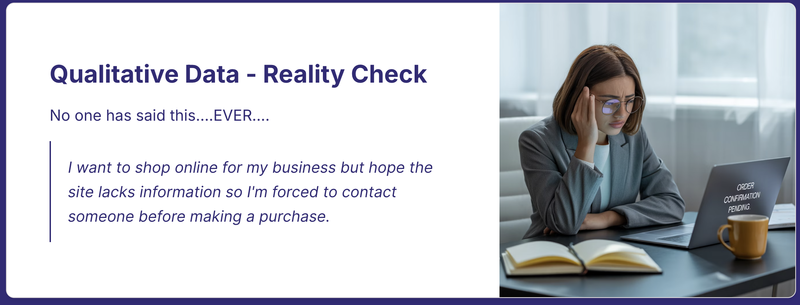
Sources of this data…
- Live chat (if available)
- Frontline employee interviews – discussing trending conversations with customers
- Incoming emails to support
We are looking for incoming sources of data that provide a summary of the pain you are causing customers.
Step 3: The Strategic B2B eCommerce Narrative
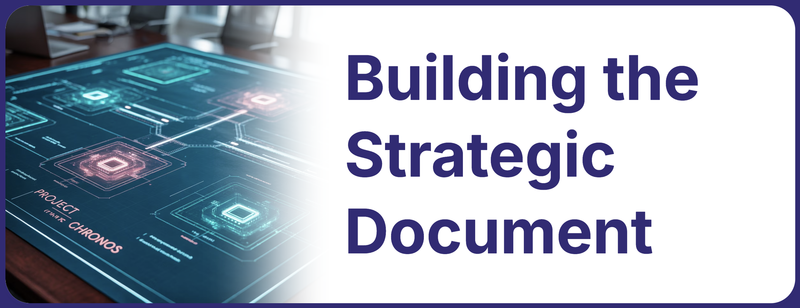
Now that we have a comprehensive perspective of both business and customer needs, the next step is to correlate all the data and produce a document that illustrates the future of your B2B eCommerce channel.
This entire document is written in "business language". No "geek" enters into this storytelling to ensure business leaders understand every written word. It is this layer of the business that needs to understand the future of the B2B eCommerce channel.
This document comprises six sections...
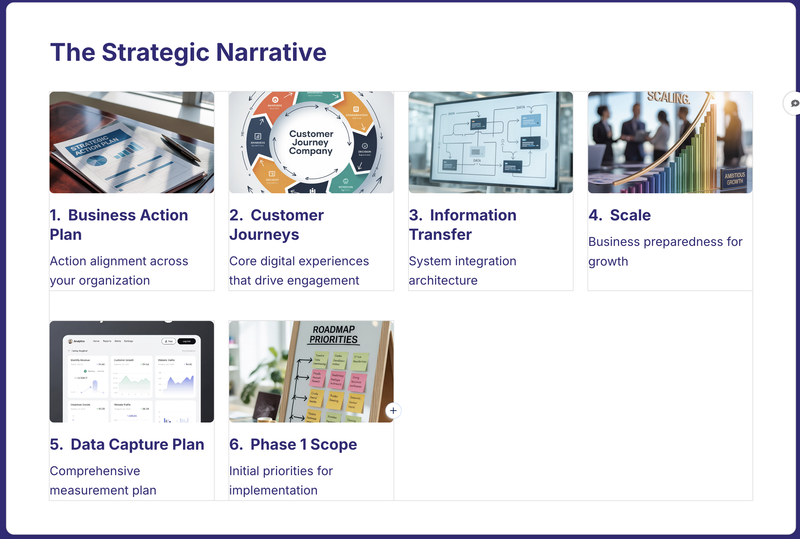
Section 1 – Repeating Business Plan of Action:
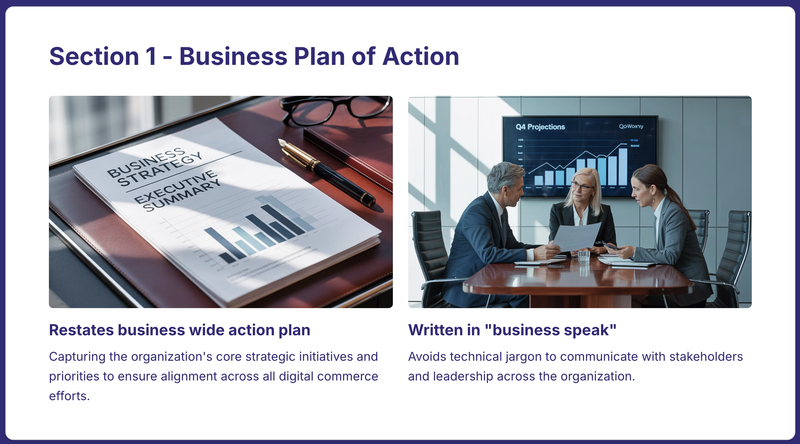
Repeating the business plan of action helps establish the strategic tone of the document.
This is a concise summary of business strategy but will be referred to throughout the document. This context adds impact later in the document when decisions are being made.
Section 2 – Core Customer Journeys – Experience Design:
This section outlines the core journeys that must be in place to support both business and customer needs.
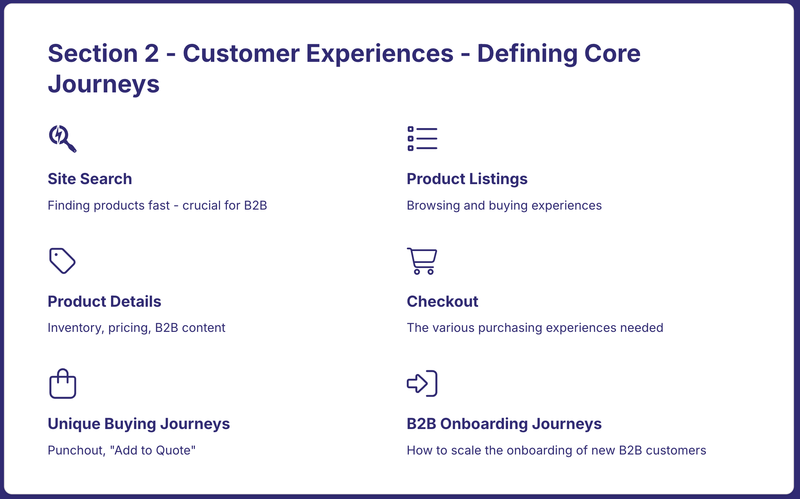
Below is an example of what topics are commonly covered in this section...
- B2B site search
- Product listing pages
- Product detail pages
- Product content
- Backorder journeys
- Checkout flows including payment methods
- What does onboarding B2B customers look like.
While the above may appear “standard”, it never is. For example, two B2B organisations can sell the same product, but their product detail pages will be completely different. They have different...
- Supply chains
- Inventory holding
- Pricing strategies for different customers
- Delivery options
- Product content
There also a need to be specific about the unique journeys needed? It's common to have specific digital journeys designed to accommodate the unique needs of the "A" B2B customer groups.
Wireframes (Level 1) – “Planning Secret Sauce”:
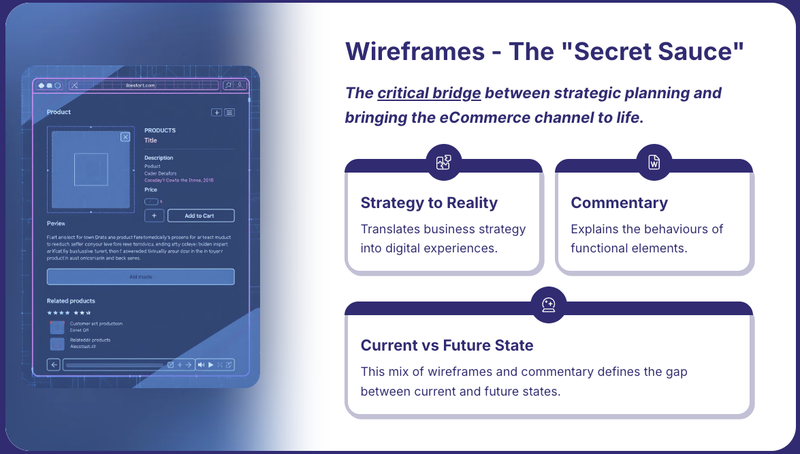
Wireframes are the critical bridge between the eCommerce strategic plan and project execution. It is the blueprint for the visual designs and the entire presentation layer.
Wireframes are the critical bridge or conduit between strategy planning and implementation. The application of wireframes enables the creation of journeys to remain strategic in the following ways...
- Page layouts are strategically laid out and structured to eliminate weaknesses and amplify strengths.
- Journeys are defined to accommodate customers and remove known pain points.
- Functional element behaviours are defined to ensure engagement is to a high standard across all device types.
- They become a crucial visual aid to Executive teams, allowing them to see the illustration of future purchasing journeys.
- It helps the Executive teams recognise the gap between the current state and the future state.
- Wireframes allow for the embedding of eCommerce best practices throughout journeys.
There is also a commentary that accompanies all wireframes, explaining how these pages are intended to interact with users when functional elements are engaged.
This commentary takes a two-dimensional image of a page layout and turns it into a three-dimensional interactive page, defining multiple layers and scenarios of engagement.
Without Wireframes, the gap between a strategic plan and implementation is vast. The UX teams lack sufficient context from the strategic plan to construct effective eCommerce buying journeys. The result is that the strategic plan is lost in translation.
Wireframes – Project Execution Layer (Level 2):
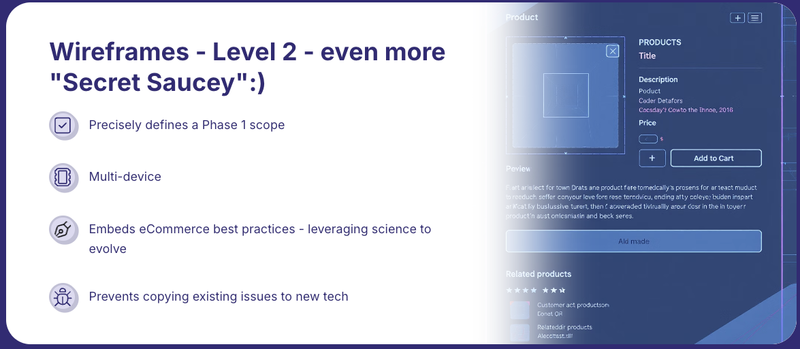
Once a Phase 1 scope is confirmed, another round of wireframes (and commentary) is produced to define and dictate the scope.
This is still classified as “strategic planning” but it’s the next layer down. It's an extension of the strategic planning process.
When wireframes are not used:
- eCommerce best practices are not leveraged
- Scope creep occurs
- Personal opinions of people in power drive the decision-making of the presentation layer
- Existing experience issues are copied over from existing platform to the new platform
Section 2.5 - Personalisation: The Next Level:
As an extension to Section 2, there is a commentary on how to take personalisation to new levels. The experiences designed in Section 2 are already highly relevant to customers and thus "personal" in the truest sense because the new experiences set out (above) are designed to remove experience pain points.
However, with the advancement in data capture and personalisation tools, there are always "low-hanging fruit" opportunities to take this to new levels.
The focus here is to identify immediate priorities, as well as what the future could look like in the context of enhancing personalisation for B2B customer experiences.
The reason to begin with "low-hanging fruit" is to enable B2B organisations the chance to "dip their toe in the water".
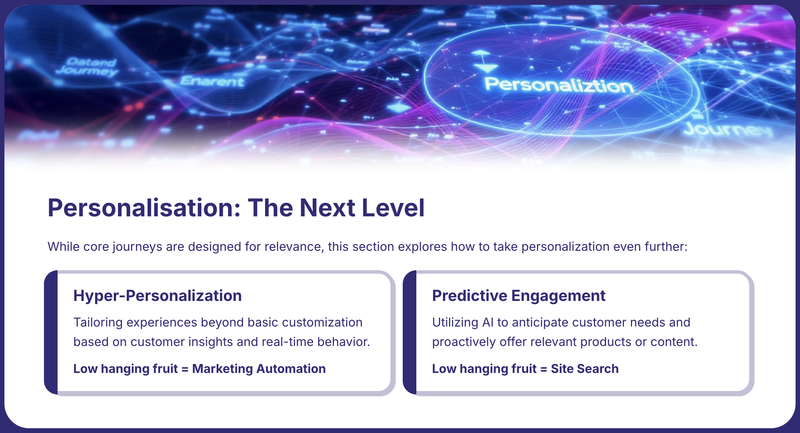
The two common starting points or proven activities that produce ROI in the context of personalisation for B2B are...
- Marketing Automation
- Site Search
Section 3 – Information Transfer – Feeding the machine:
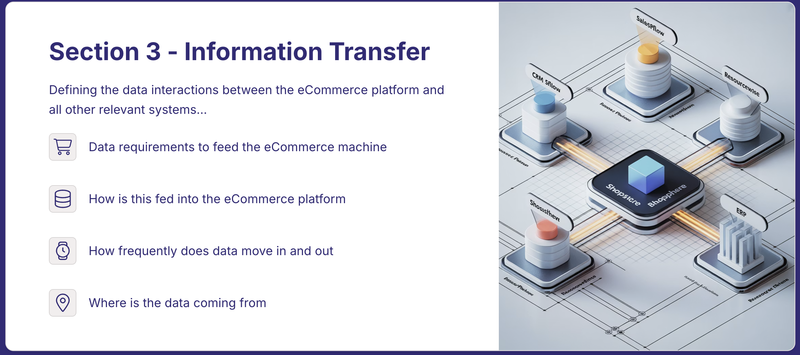
Section 3 discusses all the information the eCommerce platform requires to support the journeys outlined in the previous section.
This becomes the narrative for integrating the eCommerce platform with relevant business systems.
This is represented in both a commentary and a high-level architecture diagram: something I call “Boxes and Arrows”.
In this section we are defining and illustrating…
- The data sets needed to feed the eCommerce engine.
- How is this data fed into the eCommerce Platform?
- How frequently is it fed?
- Where is this data coming from?
- What data needs to move out of the platform and where does it need to go?
Section 4 – Scale - Business Preparedness:
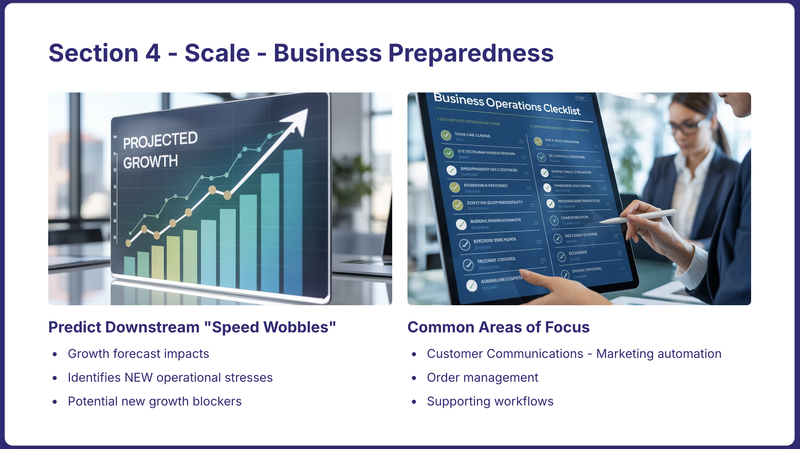
This section of the document presents conservative growth projections based on a scenario in which the eCommerce channel performs to an “OK” standard.
This addresses the scale and business preparedness needs of the business.
With the imminent increase in sales performance that will come with an improved B2B eCommerce channel, it will produce speed wobbles downstream if changes are not made in advance.
These speed wobbles become NEW growth blockers, which is why it's critical to predict these ahead of time. The good news is, we can remove these blockers before they come to life with the correct type of planning.
This is the purpose of this section of the document.
Section 5 - Data Capture Plan:
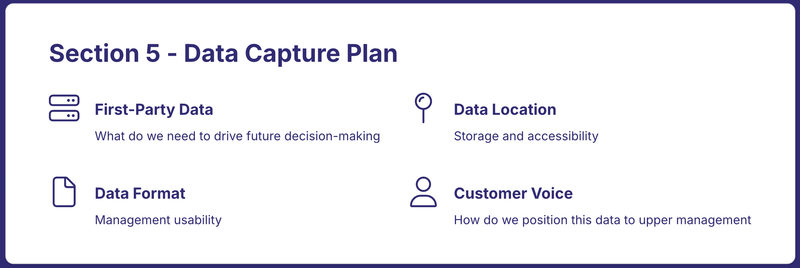
When the new eCommerce channel is live and producing new experiences for B2B customers, the outcome of this is new behaviours from customers. New types of engagement the business has never seen before.
This makes the capturing of these new behaviours critical to keep the "listening" function in play. The business activity of being empathetic should be ongoing, hence the need for rich first-party data to ensure the customer's voice continues to be heard.
This section outlines all the requirements for first-party data mining...
- What first-party data do we need for future decision-making?
- Where is this data located?
- How can this data be centralised?
- What format should this data be changed to so that management can use it?
- How can the customer voice continually be used to drive change?
Section 6 – Phase 1 Scope – High Impact Low-Hanging Fruit:
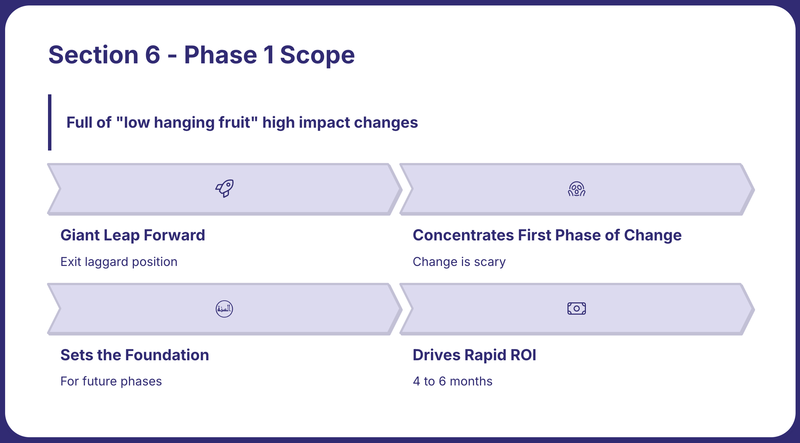
The final section of this document clearly defines the high-impact eCommerce activities that must be implemented in a Phase 1 project, achieving immediate ROI and setting the foundation for the future evolution of this channel.
Implementation of B2B eCommerce channels are never done in one big bang.
The benefits of this hyper-focused first phase of change are...
- It reduces the scale of change for a business. Change is scary.
- It pulls the business out of its "Laggard" position.
- It addresses the high-priority customer pain points.
- It produces rapid ROI.
- Sets the foundation for future channel enhancements.
That is the document done! You now have your Change Bible!
Conclusion:
This process yields a document that...
- Takes into consideration all foundational business growth needs
- Integrates the voice of the customer into all decision-making
- Wraps both business and customer needs with eCommerce/Digital best practices
To produce a transformational change bible that will guide your every future step for your B2B eCommerce channel.
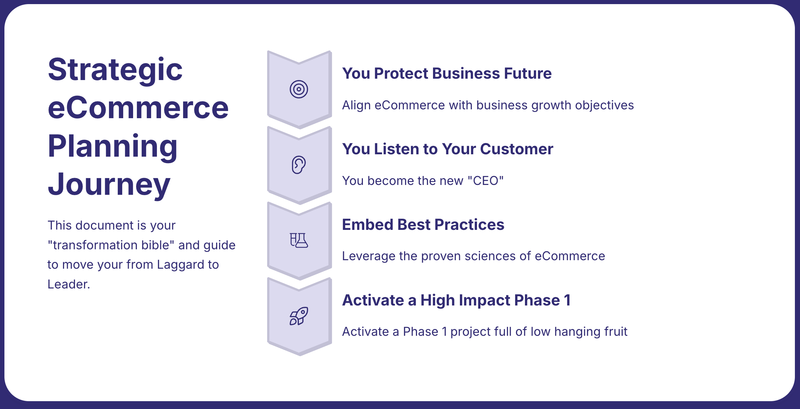
This document puts the power IN YOUR HANDS!
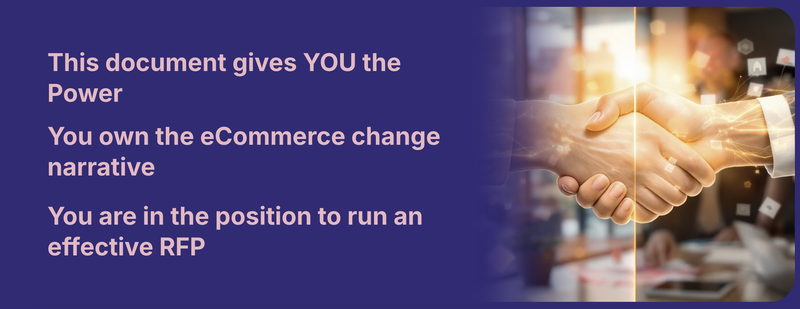
This power comes in two forms...
- It gives you the power to have constructive conversations with eCommerce Platforms and eCommerce Agencies. You can control the narrative because you now know your needs.
- Forms the basis for eCommerce platform and eCommerce Agency selection. This document controls the RFP (vendor selection) process.
With the power that comes from the B2B eCommerce channel, every business has a fiduciary responsibility to conduct an RFP process and select vendors and technology systems based on their strategic merit.
Empower your future with the B2B eCommerce strategic planning!
Benefits of working with an eCommerce Expert = Results:
When you work with an eCommerce Expert like Greg from Comma Consulting, these are the types of results you can expect...
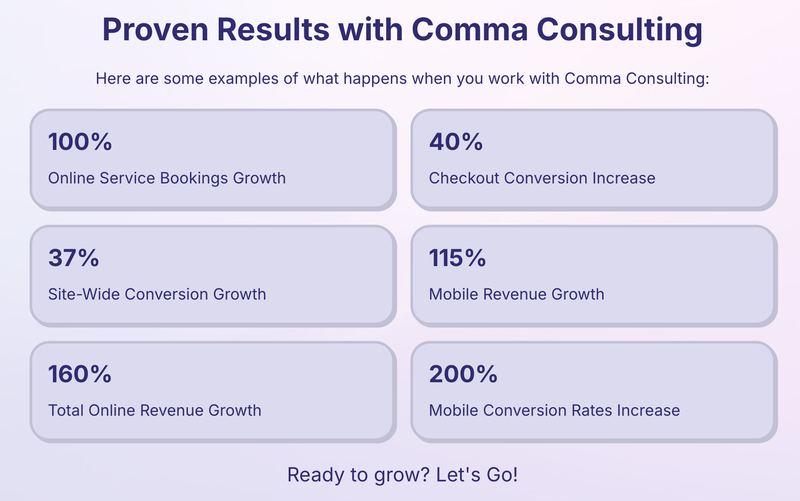
Ready to grow? Let's Go! Click here to contact Comma Consulting now.
This article was as tagged as AI eCommerce , B2B , eCommerce Consulting
